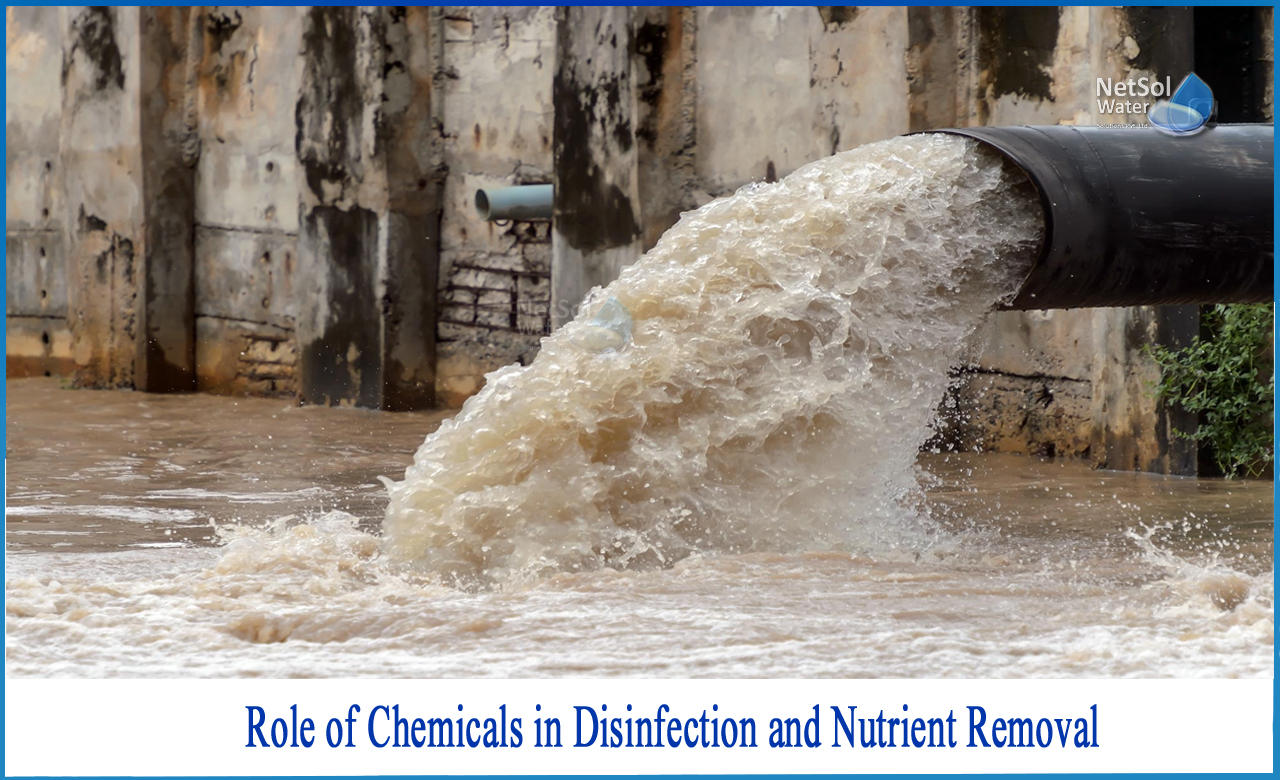Wastewater Disinfection
After basic, secondary, and sometimes tertiary wastewater treatment, wastewater disinfection takes place. Before the effluent is sent back into the water system, it is usually a final step to eliminate organisms from the treated wastewater. Disinfection stops the spread of waterborne infections by lowering the number of germs and bacteria to a safe level.
Before wastewater is released into natural rivers, it is disinfected using a range of physical and chemical processes. Because of its disinfecting characteristics and low cost, chlorine has traditionally been the chemical agent of choice for municipal wastewater treatment.
However, due to increased chlorine costs and concerns that low chlorine concentrations can still be dangerous to fish and other wildlife, more physical techniques of wastewater disinfection, such as ozonation or ultraviolet light, are being used.
What nutrients are present in wastewater and How they removed?
Phosphorus, nitrogen, and carbon are vital elements for aquatic health, but too much of them can be harmful. As a result, wastewater treatment plants must meet nutritional requirements.
Eutrophication, ammonia toxicity, and nitrate contamination of water can all be caused by nutrient-rich streams.
-Eutrophication is the over-enrichment of a body of water with nutrients, resulting in greater development of algae and rooted plants, as well as the premature ageing of lakes.
-As plants and algae die and degrade, dissolved oxygen in the water decreases. Increased growth of algae and rooted plants becomes a serious hazard.
-Controlling eutrophication necessitates the use of nitrogen and phosphate.
-Eutrophication can be handled by regulating the growth-limiting nutrient (phosphorus, nitrogen, or both).
-Ammonia toxicity: Fish and other aquatic life are poisoned by the molecular or un-ionized form of ammonia nitrogen. Ammonia toxicity can have an acute (fish death) or persistent effect (effect on reproduction or health).
-A concentration of unionised (free) ammonia of 0.1 to 10 mg/L causes acute poisoning in fish species.
-Contamination of groundwater with nitrates: wastewater treatment systems that discharge to groundwater have the potential to contaminate the groundwater with nitrates. The release of ammonia might result in the formation of nitrates; ammonia is nitrified in the soil.
-Nitrates are a public health issue because they cause methemoglobinemia (blue baby syndrome), which leads to asphyxia.
Nutrient removal in wastewater is critical for lowering oxygen demand in receiving streams, protecting aquatic life, preventing eutrophication in lakes and streams, and safeguarding human health.
Nutrient Removal
Biologically, both phosphorus and nitrogen can be eliminated. Biological nutrient removal technology is often more cost-effective than chemical or physical nutrient removal technology in both circumstances. Other considerations, such as solids handling capability and existing mechanical equipment, must be made when choosing a treatment technology.
A nitrification-denitrification method can be used to remove nitrogen. In the first phase of nitrification, ammonia nitrogen is converted to nitrite nitrogen, which is subsequently converted to nitrate nitrogen in the second step. Finally, nitrates are converted to nitrogen gas through denitrification.
Nutrient ratios, loading rates, waste rates, dissolved oxygen, and retention times are only a few of the circumstances and factors involved in biological nutrient removal.
Enhanced Biological Phosphorus Removal is another name for biological phosphorus removal. In broad terms, biological phosphorus removal is a method of modifying bacteria's living environment to allow phosphate-accumulating organisms to take up more orthophosphate than they originally released, allowing for phosphorus removal through waste.
Conclusion
The use of ozone as a disinfectant also increases the dissolved oxygen concentration of the treated wastewater. However, because ozone must be produced, ozone might be prohibitively expensive upfront compared to standard chlorination. UV disinfection is becoming more common as a wastewater disinfection technology, owing to the equipment's low life-cycle costs and the fact that, like ozone, it leaves no hazards behind.
Netsol Water is Greater Noida-based leading water & wastewater treatment plant manufacturer. We are industry's most demanding company based on client review and work quality. We are known as best commercial RO plant manufacturers, industrial RO plant manufacturer, sewage treatment plant manufacturer, Water Softener Plant Manufacturers and effluent treatment plant manufacturers. Apart from this 24x7 customer support is our USP. Call on +91-9650608473, or write us at enquiry@netsolwater.com for any support, inquiry or product-purchase related query.



